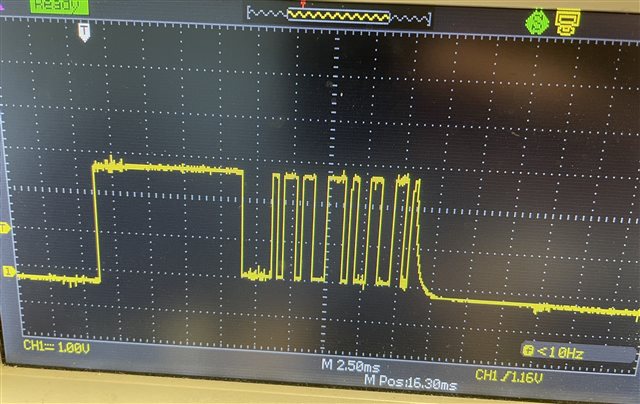Hi folks,
The blocking transmit function uart_poll_out() works as expected with UARTE, but not with UART.
For our project low power is critical. Thats why I need to use UART (~300 uA) instead of UARTE (~1300 uA). Baud is very low, so DMA does not benefit us.
brd_test.overlay file -> uart0 -> compatible = "nordic,nrf-uart";
Figure. UART - faulty transmission

brd_test.overlay file -> uart0 -> compatible = "nordic,nrf-uarte";
Figure. UARTE - transmission OK.

I took the echo_bot example and modified it. Here are the files that i modified (i removed RX code for cleanness sake):
5852.main.cpp7028.prj.confbrd_test.overlaybrd_test.dtsi
# SPDX-License-Identifier: Apache-2.0
cmake_minimum_required(VERSION 3.20.0)
find_package(Zephyr REQUIRED HINTS $ENV{ZEPHYR_BASE})
project(echo_bot_2)
target_sources(app PRIVATE src/main.cpp)
Second issue is that calling uart_irq_tx_enable(uart_dev) ends in signal handler. Please test it by adding uart_irq_tx_enable() inside uart_tx(). I hoped to work around the faulty transmission by using interrupt driven api, but I cant even enable the tx interrupt in the first place.
Third issue is being able to disable receiver (only async api has RX enable/disable). Unfortunately I couldn't get the async api it to receive in a stable manner. Thats another rant.
For interrupt driven driver I managed to get the sleep power consumption down 2.7 uA by calling pm_device_action_run() manually (as seen in the code). Are there any caveats doing it?

